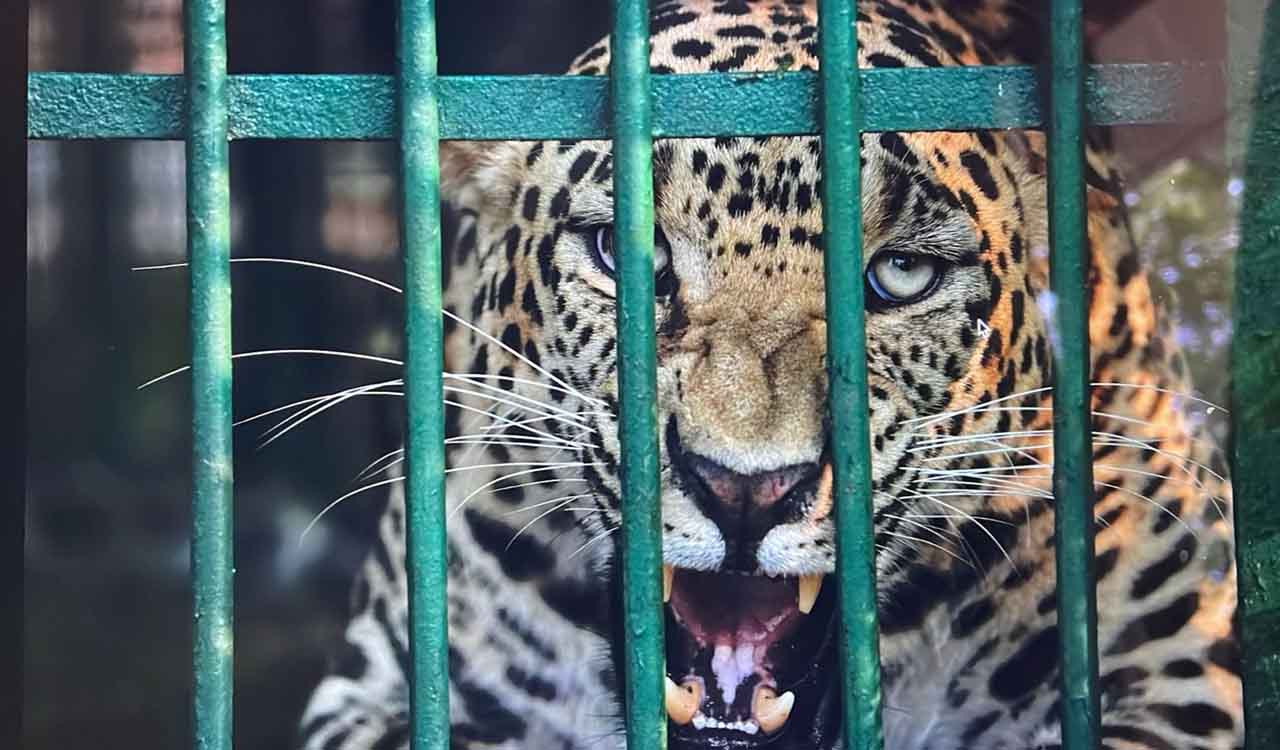Opinion: Spotted saviours of ecosystems and urban balance

Leopard-human conflict is not just a predator problem — it is a symptom of our developmental disease
Published Date – 9 May 2025, 07:11 PM

By N Shiva Kumar
In the heart of Mumbai’s concrete sprawl, Sanjay Gandhi National Park in Borivali stands as an extraordinary sanctuary — not only for flora and fauna but for one of the world’s most adaptable big cats: the leopard. These urban leopards, numbering around three dozen, have carved out a remarkable existence within the park’s 100 square kilometres.
The island of jungle is flanked on all sides by high-rise apartments, slums, highways and film studios. By night, they navigate silently through the city’s chaotic edges, slipping through alleyways, railway lines and drains, often preying on feral dogs, stray cattle, pigs and even bandicoots — inadvertently offering pest control and disease mitigation services to the metropolis.
Despite being so close to humans, they remain largely invisible and avoidant, a testament to their stealth and intelligence. Their survival is both miraculous and symbolic — a living paradox of wilderness in one of the world’s busiest cities.
The above scenario is no longer rare — it’s becoming alarmingly common across the country. Vast stretches of forests are being ruthlessly razed, and rocky outcrops that serve as natural leopard habitats are blasted to rubble in the name of unchecked commercial expansion.
This relentless destruction of wilderness — once protected homes for wildlife — is fast becoming the new normal. In a desperate bid for survival, leopards are now venturing into isolated green pockets like the ICRISAT campus in Hyderabad, seeking refuge in the few remaining silent, forested zones amid the concrete sprawl. Similarly, a leopard was spotted on the Infosys campus in Mysuru a few months ago, prompting a 10-day search by the forest department using drones, camera traps and cage traps. Employees were asked to work from home or stay indoors for safety and specific routes were assigned to trainees. In such a situation, who do we blame, certainly not the leopards, who have no intention of harming humans.
They are silent stewards, playing their part in a chain that ultimately affects everything — right down to the air we breathe and the climate we strive to stabilise
In the hushed shadow of dense forests and the dim alleys of India’s urban fringes, leopards prowl — silent, powerful and mysterious. With rosette coats like brushstrokes of gold on velvet, these elusive cats are not merely survivors but keystones of our ecological harmony. Though often misunderstood or feared, leopards play a profound and multifaceted role in both wilderness and increasingly, in human-inhabited landscapes.
Their presence is not only vital to the natural order of jungles but also, surprisingly, to the delicate balance of India’s expanding cities. As we hurtle toward rapid urbanisation, our relationship with these apex predators grows more complex — and more crucial than ever to understand.
Sentinels of the Jungle
In their traditional habitats across India, the leopards thrive in the dry deciduous forests of Madhya Pradesh to Andhra Pradesh, arid Rajasthan to Gujarat, and semi-arid States like Telangana to Maharashtra. They even occupy the misty Western Ghats and Eastern Ghats, the Himalayan foothills — leopards are guardians of biodiversity. They help regulate herbivore populations such as deer and wild boar, ensuring vegetation isn’t overgrazed, which in turn maintains the prudent health of forests.
Without predators like leopards, trophic cascades disrupt the ecological fabric, leading to soil degradation, water scarcity and biodiversity collapse. They are silent stewards, playing their part in a chain that ultimately affects everything — right down to the air we breathe and the climate we strive to stabilise.
Leopards are also highly adaptive. Unlike lions or tigers, who demand expansive territories and specific prey, leopards thrive in a variety of habitats — from riverine tracts and hills to scrublands and semi-arid zones. This versatility makes them resilient, but it also means they’re the first big cats to venture into the fringes of human settlements as we relentlessly sprawl into the wild.
A Paradoxical Coexistence
Nowhere is the leopard’s adaptability more astonishing than in India’s cities. But their presence in urban and semi-urban landscapes is not just a matter of survival. In many cases, they provide an unspoken service: controlling populations of feral dogs and livestock that contribute to rabies spread and urban waste problems.
On the outskirts of Delhi, Pune, Bengaluru and even Gurugram, leopards have been documented preying on wild pigs, which are often regarded as a menace by local residents. Without leopards, these rapidly breeding animals would multiply unchecked, increasing conflict with people.
Yet, these urban encounters are fraught with tension. Media often sensationalises leopard sightings or attacks, which are statistically rare. Most leopards avoid human contact, and when they do clash, it is often due to fear, cornering or provocation — not aggression. Education and community engagement are essential to fostering a future where cohabitation isn’t just tolerated but understood.
Encroachment: The Silent Sickness
Despite their adaptability, leopards are being cornered into increasingly fragmented patches of habitat. Highways cleave through old migratory paths. Resorts mushroom on the edges of once inviolate sanctuaries. Illegal mining, monoculture plantations and “smart” city projects eat into their homes. In the name of development, we build walls and fences that disrupt wildlife corridors, the very arteries through which ecological vitality flows.
Leopard-human conflict is not just a predator problem — it is a symptom of our developmental disease. When villages crop up in buffer zones or construction gobbles up green spaces, leopards lose both prey and privacy. We are not just encroaching on land, but on the invisible contracts of coexistence formed over millennia.
Respect, Rewilding
Saving the leopard is not about keeping a wild animal alive in isolation; it is about preserving the ecosystems they uphold and recalibrating our own place within nature. We need to reimagine rapid urban planning to include green corridors, wildlife crossings and community education. Successful projects like the safe zone underpass or leopard rescue programmes in Maharashtra show that peaceful coexistence is not a utopia — it is entirely possible when guided by science and empathy.
Community-based conservation, where local people become protectors rather than victims of wildlife, offers hope. Leopard conservation isn’t just about camera traps or tranquilisers — it’s about stories, folklore, ecology and ethics entwining.
In the end, the leopard teaches us something fundamental: that resilience lies in adaptation, but survival requires respect. We must choose whether we will be the force that pushes these ghost cats into oblivion — or the hands that guard their path, spotting wonder between the shadows of trees and towers alike.

(The author is an independent journalist and documentary wildlife photographer)






